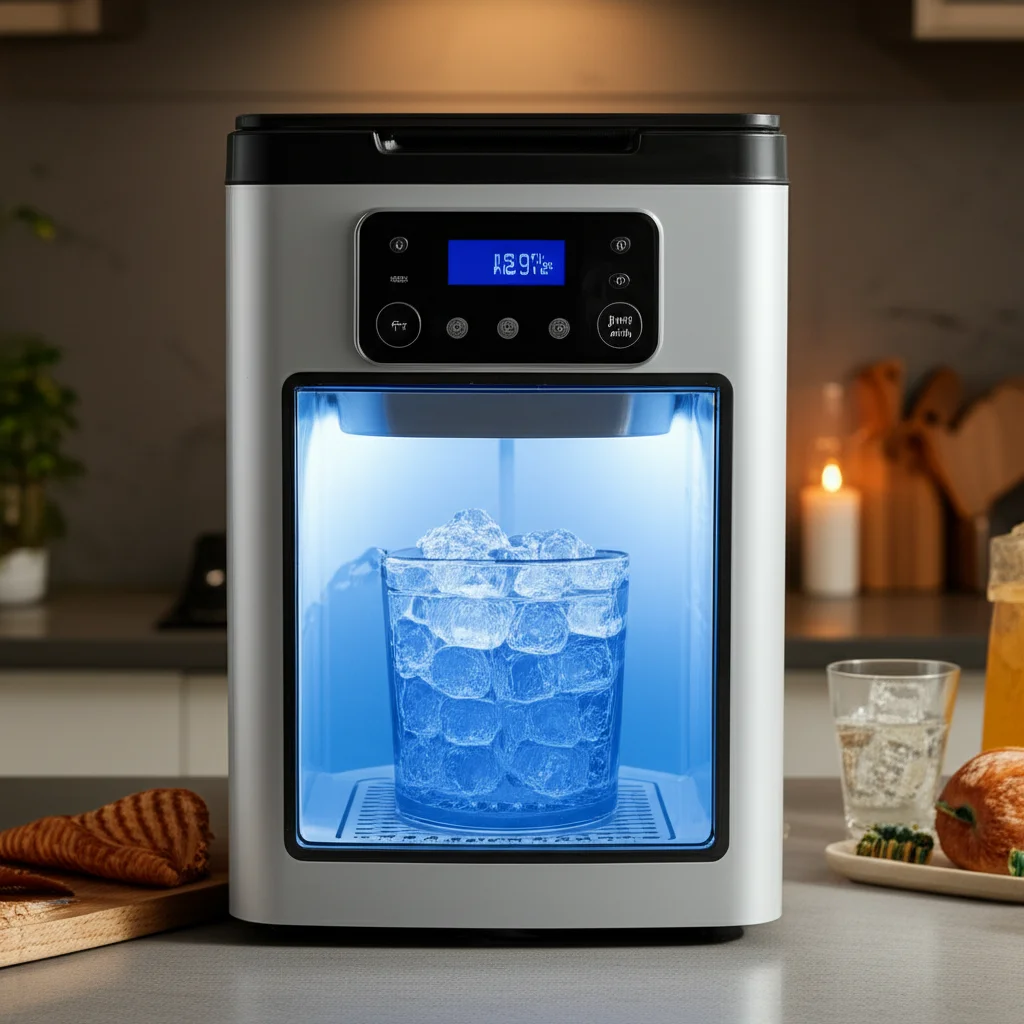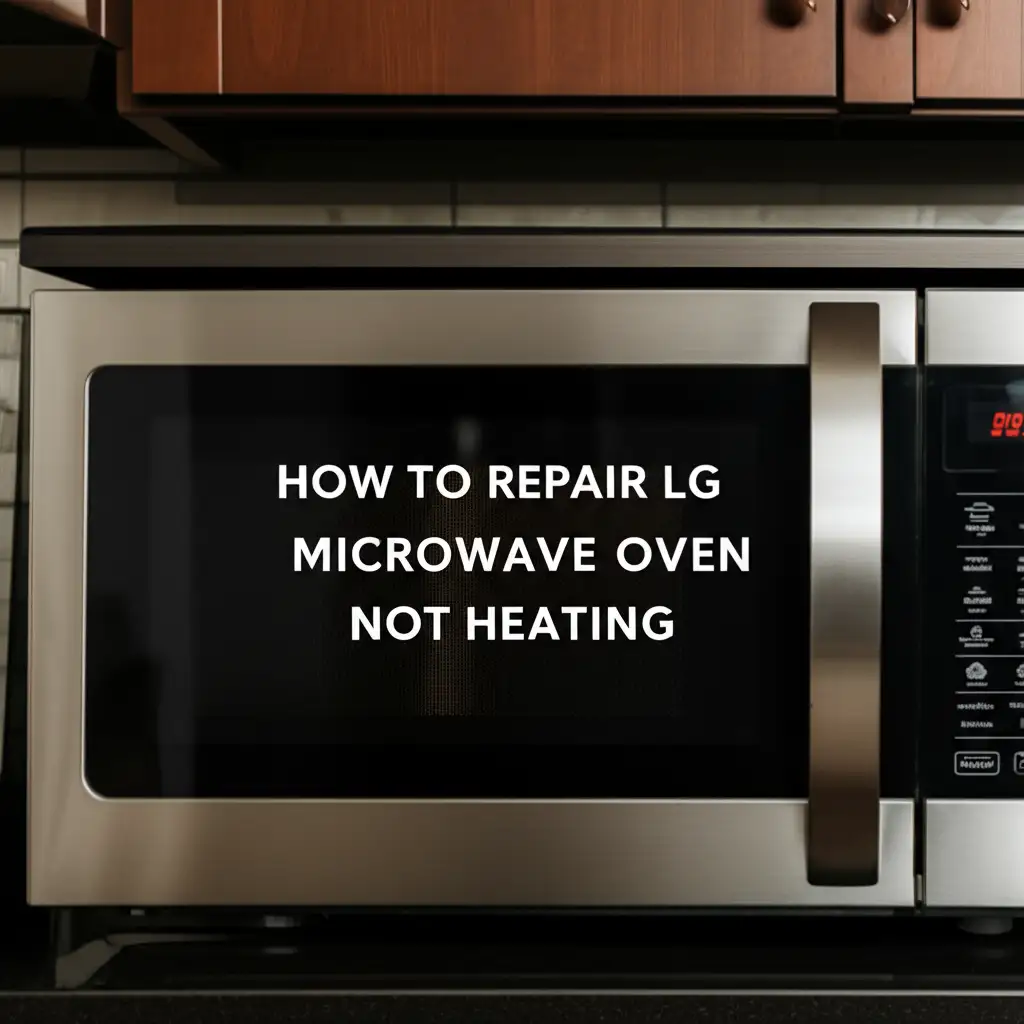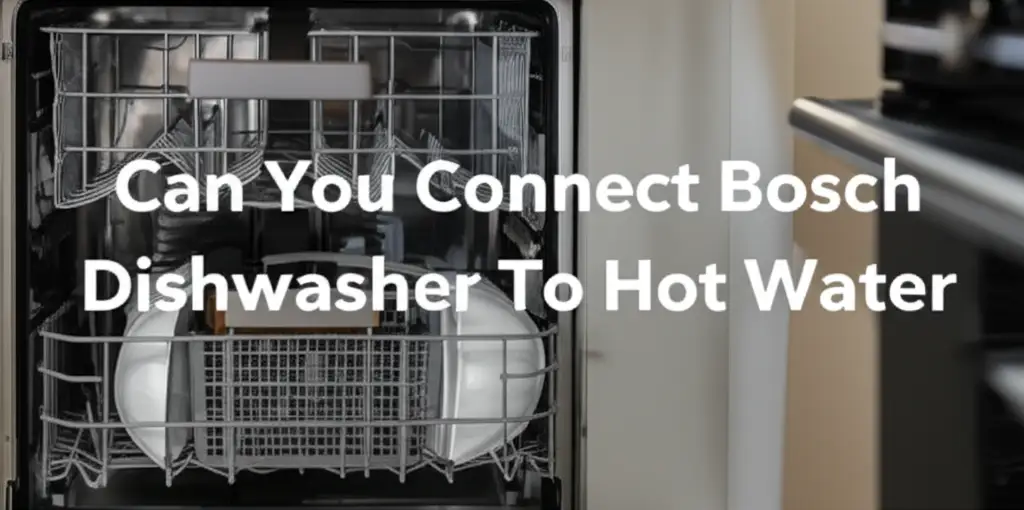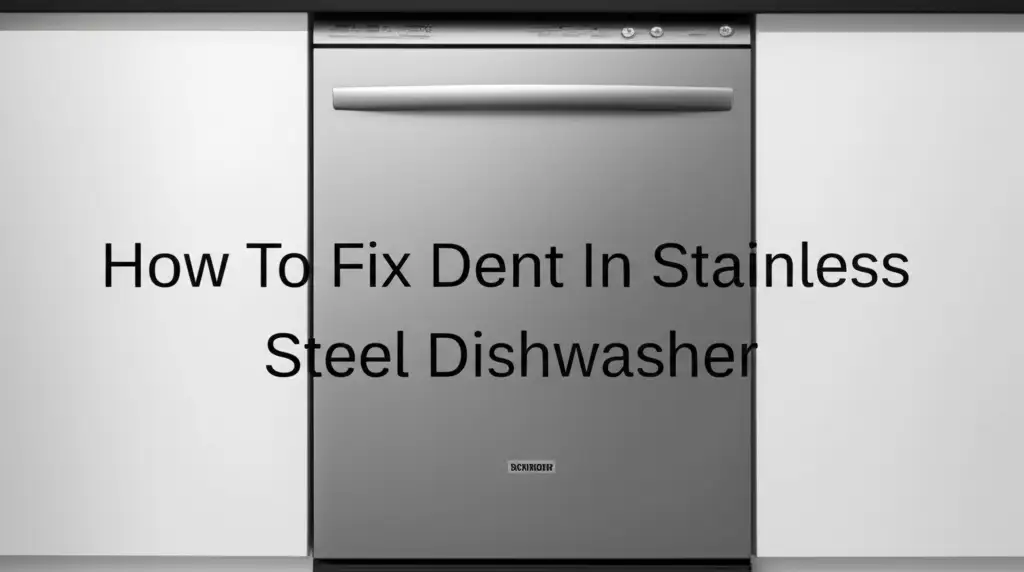· Todd Martin · Home Appliances · 21 min read
How To Clean Gevi Ice Maker

How To Clean Your Gevi Ice Maker for Fresh, Pure Ice
Imagine reaching for a glass of water, craving that crisp, cold ice, only to find it cloudy, oddly flavored, or even smelling strange. This unpleasant experience often comes from an ice maker that needs a good cleaning. Gevi ice makers are popular for their convenience and ability to produce fresh ice quickly. However, like all appliances that handle water, they accumulate mineral deposits, bacteria, and sometimes mold. Learning how to clean your Gevi ice maker regularly is essential for both the taste of your ice and the health of your household.
Many people overlook routine ice maker maintenance. Neglecting this task can lead to off-tasting ice, reduced efficiency, and even health concerns from bacteria buildup. This article will guide you through a comprehensive process to clean your Gevi ice maker effectively. We cover everything from gathering your supplies to deep cleaning methods and ongoing maintenance tips. By following these steps, you will enjoy clean, pure ice every time. We make sure your Gevi ice maker remains a valuable and hygienic addition to your kitchen.
Takeaway:
- Regularly clean your Gevi ice maker to prevent mineral buildup and bacteria.
- Use vinegar or a mild cleaning solution for effective sanitation.
- Follow a step-by-step process for thorough cleaning, including descaling.
- Implement routine maintenance for consistent ice quality and appliance longevity.
Cleaning a Gevi ice maker involves a simple process of draining water, using a food-safe cleaning solution like vinegar or citric acid, running a cleaning cycle, and then thoroughly rinsing the unit. This removes mineral deposits, prevents mold growth, and ensures your ice remains fresh and pure for consumption.
Why Your Gevi Ice Maker Needs Regular Cleaning
Your Gevi ice maker provides a constant supply of ice, making it a favorite appliance in many homes. However, its constant contact with water means it is prone to certain issues. Water contains minerals like calcium and magnesium. These minerals can build up over time, forming a hard scale on internal components. This mineral buildup affects ice quality, making cubes cloudy or causing a strange taste. It also reduces the machine’s efficiency. The ice maker works harder to produce ice, using more energy.
Beyond mineral deposits, standing water and cool, dark conditions create an ideal environment for mold and bacteria to grow. You might notice slimy residue, black spots, or an unpleasant smell coming from your ice maker. Consuming ice from a contaminated machine can pose health risks. Regular cleaning prevents these issues, ensuring your ice is safe and delicious. It also extends the lifespan of your appliance. A well-maintained ice maker performs better and lasts longer. Taking the time to clean your Gevi unit protects your investment and provides peace of mind.
Proper sanitation of your Gevi ice maker is key to its optimal performance and the purity of your ice. Neglecting this maintenance can lead to a range of problems, from unpleasant odors to potential health concerns. Imagine serving drinks with ice that carries a faint, off-putting smell or taste. This directly impacts the enjoyment of your beverages. I know I would not want that for my guests. A dirty ice maker can also lead to more serious problems. Mold and bacterial growth thrive in moist, dark environments. Your ice maker’s internal components fit this description perfectly.
These microorganisms can contaminate your ice, creating health risks if consumed. You might see visible signs like pink or black slime, or simply notice a musty odor. Even without visible signs, microscopic contaminants can be present. Regular cleaning removes these harmful elements. It ensures each ice cube is as clean and fresh as possible. This commitment to cleanliness is not just about taste; it is about safeguarding health. Proper cleaning also helps the appliance operate at its best. It prevents blockages and ensures efficient ice production. This makes your Gevi ice maker reliable for years to come.
Gathering Your Cleaning Supplies: What You Need
Before you begin cleaning your Gevi ice maker, prepare all necessary supplies. Having everything ready simplifies the process and saves time. You will need a few common household items, most of which you probably already own. The primary cleaning agent recommended for ice makers is white vinegar. White vinegar is a natural disinfectant and descaler. It safely breaks down mineral deposits and kills many types of bacteria and mold. You will need at least one cup of white vinegar for the cleaning cycle. Distilled white vinegar works best to avoid introducing new minerals.
In addition to vinegar, gather soft cloths or sponges. These are for wiping down surfaces without scratching them. A small brush, like a soft toothbrush or a bottle brush, is helpful for reaching tight spots and scrubbing stubborn residue. You will also need a clean bucket or basin to catch drained water. Ensure you have fresh, clean water for rinsing purposes. For deep cleaning, you might also consider a mild, unscented dish soap or a specialized ice maker cleaning solution. Always check your Gevi ice maker’s manual for specific recommendations on cleaning agents. Using the right tools protects your appliance and ensures an effective clean.
To thoroughly clean your Gevi ice maker, selecting the right tools and cleaning agents is crucial. These items work together to tackle different aspects of the cleaning process. I always double-check my cleaning kit before starting any major appliance cleaning. First, a reliable cleaning solution is paramount. White vinegar is my go-to choice for many cleaning tasks, and it works wonderfully for ice makers. Its acidic nature excels at dissolving mineral buildup, often called limescale. It also acts as a natural sanitizer. Some people prefer citric acid solution, which is also very effective and odorless.
You can buy food-grade citric acid powder and mix it with water. Besides the cleaning solution, you need tools for physical scrubbing and wiping. Soft, lint-free cloths are perfect for wiping both internal and external surfaces. They prevent scratches and leave no residue. A small, soft-bristled brush, such as a toothbrush, is invaluable for reaching into nooks and crannies. These tight spots often accumulate grime and mold. Remember, never use abrasive scrubbers or harsh chemicals. They can damage the delicate internal parts of your Gevi ice maker. Finally, have a large basin or bucket ready to collect the water you drain from the machine. This keeps your workspace clean and prevents spills.
Step-by-Step: Cleaning Your Gevi Ice Maker with Vinegar
Cleaning your Gevi ice maker with vinegar is a safe and effective method. This process removes mineral buildup and sanitizes the internal components. Follow these steps carefully to ensure a thorough clean.
1. Prepare the Ice Maker: * First, turn off your Gevi ice maker. * Unplug the power cord from the wall outlet. This step is critical for safety. * Empty the ice basket. Discard any remaining ice. * Drain all water from the reservoir. Locate the drain plug, usually at the bottom or back of the unit. Remove the plug and let the water flow into a bucket or sink. Once empty, replace the drain plug securely.
2. Create the Cleaning Solution: * Mix a solution of white vinegar and water. A common ratio is one part white vinegar to one part water. For example, use 1 cup of vinegar with 1 cup of water. If your machine is very dirty, you can use a stronger vinegar solution, up to pure vinegar, but always follow with ample rinsing. For comprehensive guidance on using vinegar, you can refer to our article on how to clean ice maker with vinegar.
3. Run the Cleaning Cycle: * Pour the vinegar solution into the water reservoir of your Gevi ice maker. * Plug the unit back in. * Power on the ice maker. Most Gevi models have a self-cleaning function. If yours does, activate it according to your user manual. This cycle circulates the vinegar solution through the system. If your model does not have a self-cleaning function, simply run the ice-making cycle several times. Do not collect any ice produced during this phase. Discard any ice cubes made with the vinegar solution. This allows the vinegar to circulate and clean the internal components.
4. Drain and Rinse: * After the cleaning cycle finishes (or after several ice-making cycles), turn off and unplug the unit again. * Drain the vinegar solution completely from the reservoir. * Rinse the reservoir thoroughly with fresh, clean water. Fill it with clean water, then drain it. Repeat this rinsing process at least 2-3 times. This removes all traces of vinegar and loosened debris.
5. Manual Cleaning of Accessible Parts: * While the unit is unplugged and drained, use a soft cloth dipped in a diluted vinegar solution or mild soap and water to wipe down accessible internal surfaces. This includes the ice basket, water tray, and any parts you can reach. Pay attention to crevices where mold might hide. For cleaning general countertop units, our guide on how to clean countertop ice maker offers additional tips. * Use a small brush for tight areas. Be gentle to avoid damage.
6. Final Rinse Cycles: * Fill the water reservoir with fresh, clean water. * Plug in and power on the ice maker. * Run several cycles of ice production using only clean water. * Discard the first 2-3 batches of ice cubes. This ensures all vinegar residue is gone. You will notice the ice is clearer and tastes fresh. * Once the ice tastes normal and clean, your Gevi ice maker is ready for use.
This methodical approach ensures your Gevi ice maker is not only clean but also sanitized. It helps provide pure, fresh ice for all your needs.
Beyond Vinegar: Alternative Cleaning Solutions
While white vinegar is a highly effective and popular choice for cleaning Gevi ice makers, other solutions can also provide excellent results. These alternatives are useful if you prefer an odorless cleaner or if you need to tackle specific issues like heavy mineral buildup. Understanding your options allows you to choose the best method for your needs. Always ensure any cleaning agent you use is food-safe, especially for appliances that come into contact with drinking water.
1. Citric Acid Solution: * Citric acid is a natural descaler and cleaner derived from citrus fruits. It is highly effective at dissolving mineral deposits without leaving a strong odor. You can purchase food-grade citric acid powder online or at some grocery stores. * How to use: Mix 1-2 tablespoons of citric acid powder with 1 liter (about 4 cups) of warm water until dissolved. Pour this solution into the Gevi ice maker’s reservoir. * Run the cleaning cycle as you would with vinegar. If no self-clean function, run regular ice-making cycles. * After the cycle, drain the solution and rinse the unit thoroughly with several cycles of fresh water, discarding the first few batches of ice. This method is particularly effective for hard water areas.
2. Mild Dish Soap and Water: * For external surfaces and removable parts, a mild, unscented dish soap works well. This is ideal for general grime and daily wipe-downs. * How to use: Mix a few drops of mild dish soap with warm water in a basin. Dip a soft cloth or sponge into the soapy water and wring it out well. * Wipe down the exterior of the Gevi ice maker, the ice basket, and the water tray. * Rinse these parts completely with clean water and dry them thoroughly before reassembling. Never use soap inside the internal water lines. Soap residue can be difficult to rinse completely and can affect ice taste.
3. Commercial Ice Maker Cleaners: * Several commercial ice maker cleaning solutions are available. These products are specifically formulated to clean and descale ice machines. They often contain a blend of acids designed for effective cleaning. * How to use: Always follow the manufacturer’s instructions precisely. These cleaners usually involve mixing a concentrated solution with water, running a cleaning cycle, and then performing multiple rinse cycles. While effective, they can be more expensive than vinegar or citric acid and may require more caution in handling.
4. Baking Soda (for odors and light cleaning): * Baking soda is an excellent deodorizer and a mild abrasive. It can be helpful for absorbing lingering odors and for light scrubbing of accessible surfaces. * How to use: For odors, dissolve 1-2 tablespoons of baking soda in a cup of warm water. Use this solution to wipe down the inside of the ice basket and other accessible areas. For a deeper clean combined with vinegar, you can also explore techniques like how to clean with vinegar and baking soda. Ensure proper rinsing afterward. Do not combine baking soda directly with vinegar inside the machine during a cleaning cycle, as they neutralize each other.
When choosing an alternative, consider the type of buildup you are dealing with and your personal preference for scent. Always prioritize food-safe options and thorough rinsing to ensure your Gevi ice maker produces clean, taste-free ice.
Targeting Stubborn Issues: Mold and Mineral Buildup
Sometimes, routine cleaning with vinegar might not be enough to tackle more severe issues in your Gevi ice maker. Stubborn problems like heavy mineral buildup or pervasive mold require a more focused approach. Addressing these effectively ensures the longevity of your machine and the safety of your ice. My own experience has taught me that prevention is easier, but knowing how to fight tough grime is essential.
1. Addressing Heavy Mineral Buildup (Descaling): * Mineral buildup, or limescale, appears as white, crusty deposits on surfaces that come into contact with water. If left untreated, it can clog water lines and impair ice production. * Stronger Vinegar or Citric Acid Solution: For heavy scaling, you might need a stronger cleaning solution. Instead of a 1:1 vinegar-to-water ratio, try 2 parts vinegar to 1 part water, or even undiluted white vinegar for the cleaning cycle. Similarly, increase the citric acid concentration to 2-3 tablespoons per liter of water. * Soaking Removable Parts: If the ice basket or water tray has heavy scale, remove them and soak them in the stronger vinegar or citric acid solution for 30-60 minutes. Use a soft brush to gently scrub away the loosened deposits. * Repeated Cycles: Run the cleaning cycle with the stronger solution two or three times if the buildup is severe. Ensure you drain and rinse thoroughly between each solution cycle.
2. Eliminating Mold and Slime: * Mold often appears as black, green, or pink slimy patches, especially in damp, dark areas. It thrives in stagnant water. Portable ice makers are prone to this. You can learn more about this by reading our guide on how to clean mold from portable ice maker. * Manual Scrubbing: The first step is physical removal. With the machine unplugged and drained, use a soft brush (like a toothbrush) to scrub away any visible mold. Dip the brush in a solution of white vinegar or a mild bleach solution (1 teaspoon bleach per gallon of water – use with extreme caution and ensure thorough rinsing). * Vinegar Soak/Cycle: After manual scrubbing, run a full cleaning cycle with white vinegar. Vinegar is a good mold killer. For deeper insights on fighting mold, our article on how to clean mold with vinegar offers valuable information. * Bleach Solution (Use with extreme caution): If mold persists, a very diluted bleach solution can be used. Never mix bleach with vinegar or any other cleaner, as this creates dangerous fumes. Prepare a solution of 1 teaspoon of household bleach per gallon of water. Pour this into the reservoir and run one short cleaning cycle. Immediately after, drain the bleach solution and rinse the machine with plain water at least 5-7 times with full cycles, discarding all ice until no bleach smell or taste remains. This method is a last resort due to the difficulty of completely rinsing bleach.
3. Preventing Future Buildup: * After tackling stubborn issues, focus on prevention. Always use filtered water if your tap water is hard. * Regularly empty the water reservoir when the machine is not in use. This prevents standing water. * Leave the lid or drain plug open when the ice maker is stored. This allows the interior to air dry completely. These simple steps significantly reduce the chances of mold and mineral buildup returning.
Maintaining Freshness: Routine Care for Your Gevi Ice Maker
After a thorough cleaning, establishing a routine maintenance schedule is crucial for your Gevi ice maker. Consistent care prevents the buildup of mineral deposits and inhibits the growth of bacteria and mold. This ensures you always have access to fresh, clean ice and extends the life of your appliance. A regular maintenance schedule saves you time and effort in the long run.
1. How Often to Clean: * Monthly Cleaning: For daily use, I recommend performing a full cleaning cycle with vinegar or citric acid at least once a month. This schedule keeps general buildup at bay. * Bi-Weekly Check: If you live in an area with very hard water, or if you use the machine frequently, a bi-weekly quick clean or flush might be beneficial. * As Needed: If you notice cloudy ice, an unusual taste, or visible slime, clean the unit immediately, regardless of the last cleaning date.
2. Daily Habits for Better Hygiene: * Empty and Dry: When you finish using your Gevi ice maker for the day, or if you plan not to use it for a few days, empty any remaining water from the reservoir. Also, remove the ice basket and let both air dry completely before storing. This prevents stagnant water issues. * Use Filtered Water: If your tap water is hard or has a strong taste, consider using filtered water. This significantly reduces mineral buildup and improves ice quality. Most Gevi models do not have built-in filters. Using external filtration is a smart choice. * Wipe Down Exterior: Quickly wipe down the exterior of the machine with a damp cloth daily or weekly. This keeps it looking good and prevents dust and grime buildup.
3. Seasonal and Storage Maintenance: * Before Extended Storage: If you plan to store your Gevi ice maker for a long period (e.g., during winter months or when going on vacation), perform a full deep clean. Ensure the unit is completely dry inside before packing it away. Leave the lid slightly ajar or the drain plug open to allow air circulation and prevent musty odors. * Before First Use (After Storage): Always run a full cleaning cycle with vinegar or citric acid before using the ice maker after extended storage. This flushes out any dust or dormant mold that might have accumulated.
By integrating these simple routine care steps into your habits, you will ensure your Gevi ice maker remains a reliable source of clean, refreshing ice. This proactive approach saves you from more intensive cleaning efforts later and keeps your appliance performing at its peak.
Troubleshooting Common Cleaning Challenges
Even with a comprehensive cleaning routine, you might encounter specific issues with your Gevi ice maker. These challenges can be frustrating, but most have straightforward solutions. Understanding how to troubleshoot common cleaning problems helps you maintain your appliance effectively. My own experience with various appliances taught me patience and a systematic approach.
1. Lingering Odors After Cleaning: * Problem: Your ice maker still smells off, even after cleaning. This often indicates residual cleaner or deeply embedded smells from mold/bacteria. * Solution: * More Rinsing Cycles: The most common reason is insufficient rinsing. Perform at least 3-5 more full rinse cycles with fresh, clean water, discarding all ice produced. * Baking Soda Flush: For persistent odors, dissolve 2-3 tablespoons of baking soda in a full reservoir of warm water. Let it sit for an hour (do not run cycles with baking soda) then drain thoroughly. Follow with multiple plain water rinse cycles. * Air Dry Completely: After draining, leave the lid open and the drain plug removed for 24-48 hours. This allows air to circulate and thoroughly dry the interior, which helps dissipate odors.
2. Cloudy or Off-Tasting Ice After Cleaning: * Problem: The ice is not clear, or it still has a strange taste. This suggests mineral residue or leftover cleaning solution. * Solution: * More Rinsing: As with odors, lack of rinsing is often the culprit. Continue running plain water cycles until the ice is perfectly clear and taste-free. * Check Water Source: If you use hard tap water, minerals will quickly re-accumulate. Switch to filtered or distilled water to see if ice quality improves. * Stronger Descaling: If ice is cloudy due to mineral deposits, a stronger descaling agent might be needed during the cleaning cycle. Use undiluted vinegar or a higher concentration of citric acid for one cleaning cycle, followed by extensive rinsing.
3. Visible Slime or Mold Reappears Quickly: * Problem: Mold or pink/black slime returns soon after cleaning. This indicates a very persistent mold issue or improper drying. * Solution: * Aggressive Manual Scrubbing: Physically scrub every accessible area with a vinegar-soaked brush. Ensure no visible mold remains before running cycles. * Bleach Solution (Last Resort): If mold is severe, use a very diluted bleach solution (1 teaspoon per gallon of water) for one short cleaning cycle. Immediately follow with at least 5-7 full rinse cycles, discarding all ice. Be extremely cautious, never mix bleach with other cleaners, and ventilate the area well. * Consistent Drying: The most important preventative step is complete drying. Always empty the reservoir and ice basket, then leave the lid open for several hours after each use or between cleanings.
4. Machine Not Making Ice After Cleaning: * Problem: The Gevi ice maker does not produce ice, or production is very slow. * Solution: * Check Water Level: Ensure the reservoir is filled to the max line with water. * Drain Plug Secure: Make sure the drain plug is fully inserted and not leaking water. * Power Connection: Confirm the unit is properly plugged in and powered on. * Filter Clog (if applicable): While Gevi portable units usually don’t have user-serviceable water filters, check if anything is blocking the water intake inside the reservoir. * Consult Manual: If issues persist, refer to your Gevi ice maker’s user manual for specific troubleshooting steps or contact customer support.
By systematically addressing these common challenges, you can keep your Gevi ice maker performing optimally. This ensures you always have a steady supply of fresh, clean ice.
FAQ Section
How often should I clean my Gevi ice maker? You should clean your Gevi ice maker at least once a month if you use it regularly. If you live in an area with hard water, or if you use the machine daily, consider cleaning it every two to three weeks. Always clean it immediately if you notice strange tastes, odors, or visible buildup. Regular cleaning prevents problems.
Can I use bleach to clean my Gevi ice maker? Using bleach is generally not recommended as a primary cleaning agent due to the difficulty of complete rinsing and potential health risks. However, for severe mold issues, a very diluted solution (1 teaspoon bleach per gallon of water) can be a last resort. Always rinse thoroughly with many cycles of plain water afterwards. Never mix bleach with other cleaners, especially vinegar.
Why does my Gevi ice maker taste strange? An odd taste in your ice usually comes from mineral buildup (limescale) or mold/bacteria growth inside the machine. It can also be caused by insufficient rinsing after cleaning, leaving a residue of the cleaning solution. Perform a thorough cleaning with vinegar and ensure multiple rinse cycles to eliminate the taste. Using filtered water can also help.
How do I prevent mold in my Gevi ice maker? To prevent mold, always empty the water reservoir and ice basket after each use or when the machine is not in use for extended periods. Leave the lid open and the drain plug removed to allow the interior to air dry completely. Use filtered water. Regular monthly cleaning with vinegar is also crucial for prevention.
Is descaling necessary for Gevi ice makers? Yes, descaling is necessary, especially if you use hard tap water. Descaling removes mineral buildup (limescale) that can affect ice quality and the machine’s efficiency. White vinegar or citric acid solutions are excellent descalers. Regular descaling extends the life of your Gevi ice maker and ensures clear, pure ice production.
What is the best way to clean my Gevi ice maker without harsh chemicals? The best way to clean your Gevi ice maker without harsh chemicals is by using white vinegar or food-grade citric acid. These natural acids are highly effective at dissolving mineral deposits and sanitizing the machine. Always follow with thorough rinsing with clean water. These options are food-safe and leave no harmful residues when rinsed properly.
Conclusion
Maintaining a clean Gevi ice maker is paramount for enjoying fresh, pure ice and ensuring the longevity of your appliance. We have explored the critical reasons why regular cleaning is necessary, from preventing mineral buildup to combating mold and bacteria. We also detailed the essential supplies you need and provided
- gevi ice maker cleaning
- ice maker maintenance
- clean portable ice maker
- vinegar cleaning ice maker
- gevi appliance care
- ice maker sanitation





